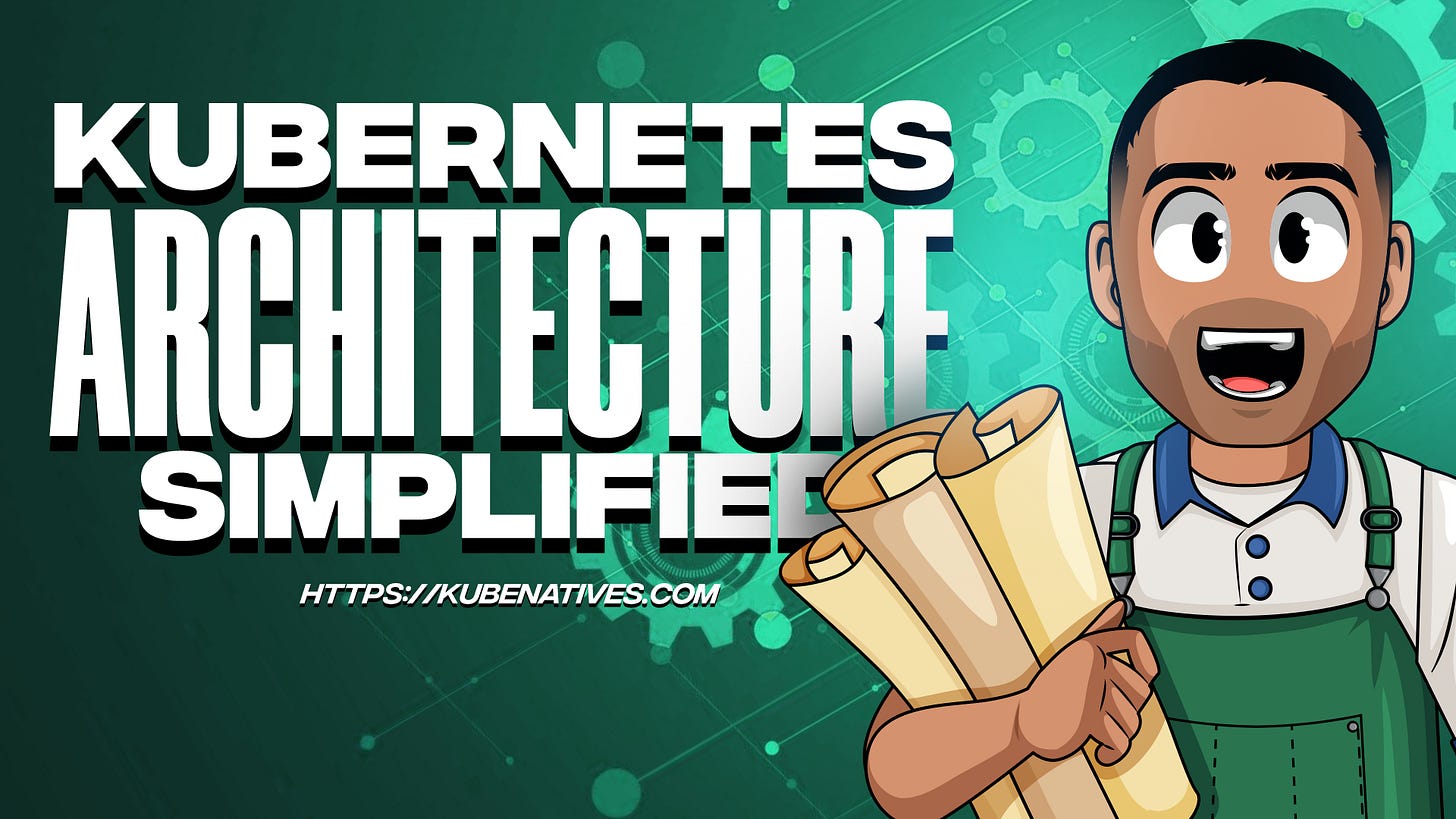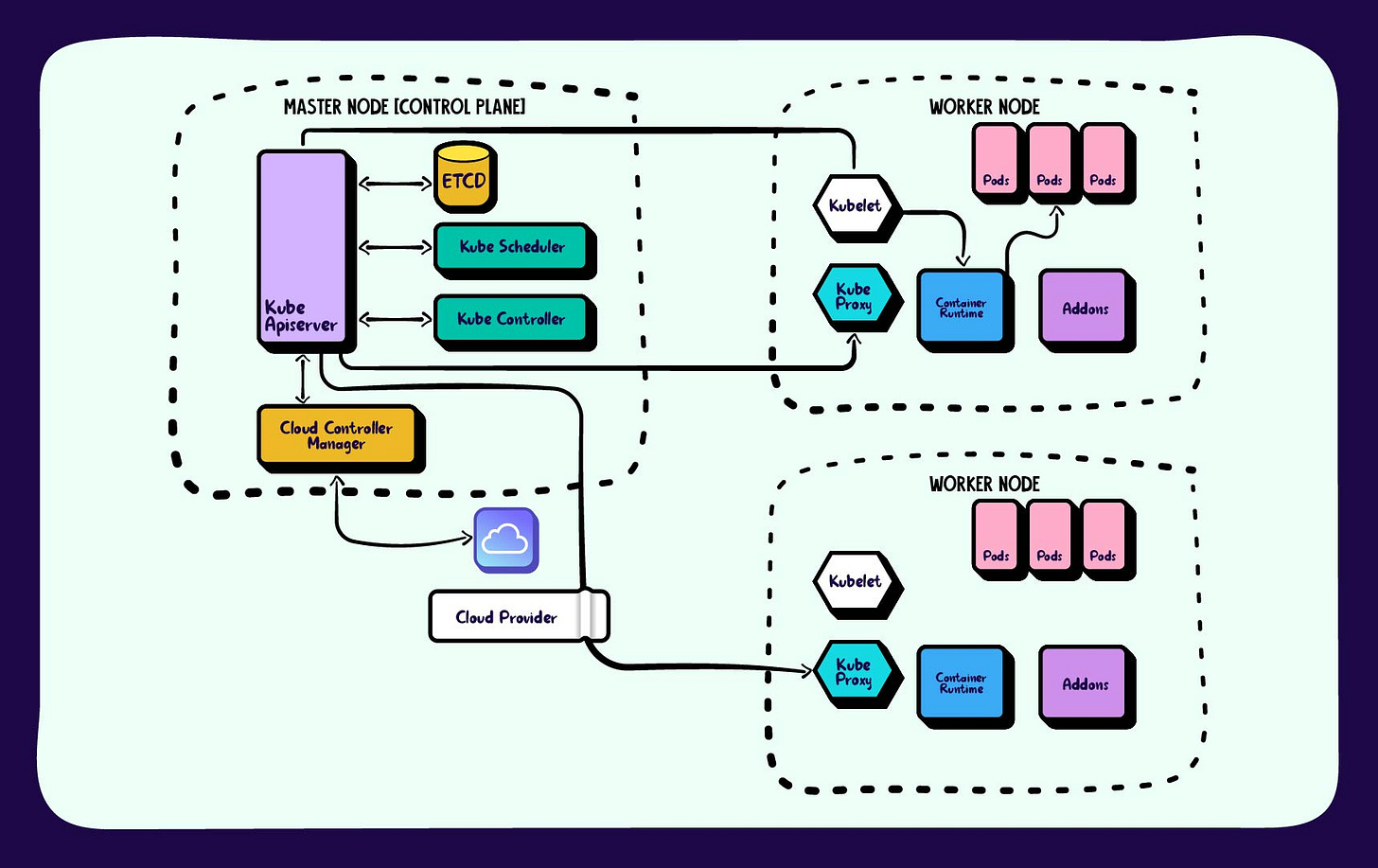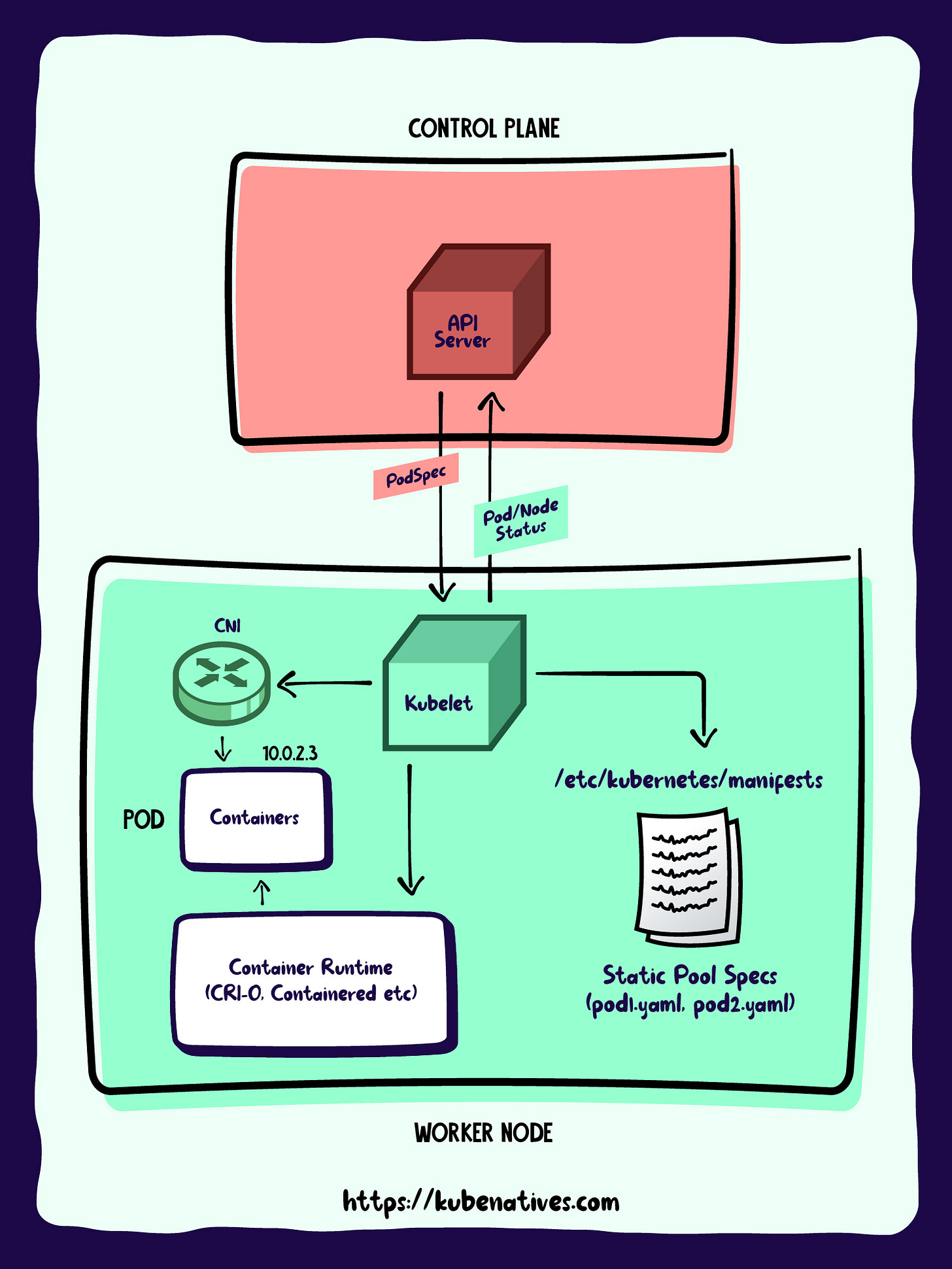Understanding Kubernetes Architecture
Simplified Kubernetes Architecture for beginners
Kubenatives Newsletter - Edition #5
🚀 Welcome to this edition of the Kubenatives Newsletter! Kubernetes is the backbone of modern cloud-native infrastructure, enabling scalable and resilient applications.
In this edition, we will explore the architecture of Kubernetes, its core components, and how they work together to orchestrate workloads efficiently.
🏗 1. The High-Level Architecture of Kubernetes
Kubernetes follows a master-worker architecture, where control plane components manage the cluster, and worker nodes run workloads. This design ensures scalability, fault tolerance, and high availability.
🔹 Key Components of Kubernetes Architecture
✅ Control Plane - Manages the cluster state and schedules workloads.
✅ Worker Nodes - Execute workloads in the form of pods.
✅ Persistent Storage - Ensures data remains available across pod restarts.
✅ Networking - Provides seamless communication between pods and external clients.
🎯 2. Control Plane Components
The control plane is responsible for making global decisions about the cluster and ensuring workloads run as expected.
🔹 API Server (kube-apiserver)
Acts as the gateway to Kubernetes.
All communication with Kubernetes goes through the API server.
Implements authentication and authorization mechanisms.
🔹 Controller Manager (kube-controller-manager)
Runs various controllers that maintain the desired state of the cluster.
Examples: Node controller, Replication controller, Service controller.
🔹 Scheduler (kube-scheduler)
Assigns workloads (pods) to worker nodes based on resource availability and constraints.
Ensures efficient workload distribution.
🔹 etcd (Distributed Key-Value Store)
Stores cluster configuration, state, and metadata.
Highly available and consistent.
🖥 3. Worker Node Components
Each worker node runs workloads (pods) and communicates with the control plane.
🔹 Kubelet
The agent that runs on each worker node.
Ensures containers are running and reports their status to the control plane.
🔹 Kube Proxy
Manages network connectivity for services.
Implements Kubernetes networking policies.
🔹 Container Runtime
Runs containerized applications within pods.
Examples: Docker, containerd, CRI-O.
🔄 4. How Kubernetes Works: A Request Flow
1️⃣ User submits a request to the API Server (e.g., create a pod, deploy an application).
2️⃣ API Server authenticates the request and updates etcd.
3️⃣ Scheduler assigns the pod to a worker node based on resource availability.
4️⃣ Kubelet pulls the container image and starts the pod.
5️⃣ Kube Proxy manages networking and ensures service discovery.
6️⃣ Controller Manager maintains the desired state (e.g., reschedules failed pods).
📦 5. Kubernetes Networking Model
Every pod gets a unique IP address.
Services provide stable endpoints for accessing applications.
Network policies control traffic between pods.
Common CNIs: Calico, Flannel, Cilium.
🛠 6. Persistent Storage in Kubernetes
Persistent Volumes (PVs) store data beyond pod lifetimes.
Persistent Volume Claims (PVCs) allow pods to request storage.
Storage Classes define different types of storage (e.g., SSD, NFS, AWS EBS).
🎯 Conclusion
Understanding Kubernetes architecture is crucial for designing scalable and resilient cloud-native applications. By mastering its core components, networking, and storage mechanisms, you can efficiently manage workloads in any environment.
⚡ What would you like to see in the next edition? Reply with your thoughts! 🚀
📩 Enjoyed this newsletter? Share it with your colleagues!
📢 Follow me on social media for more Kubernetes insights!
Stay connected for more updates and discussions! 🚀




